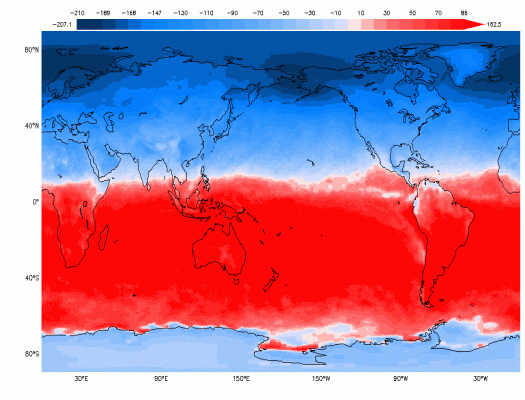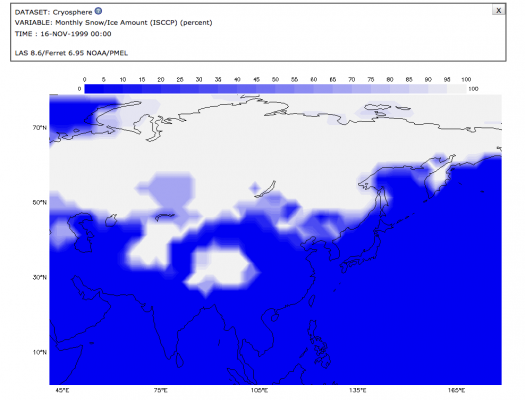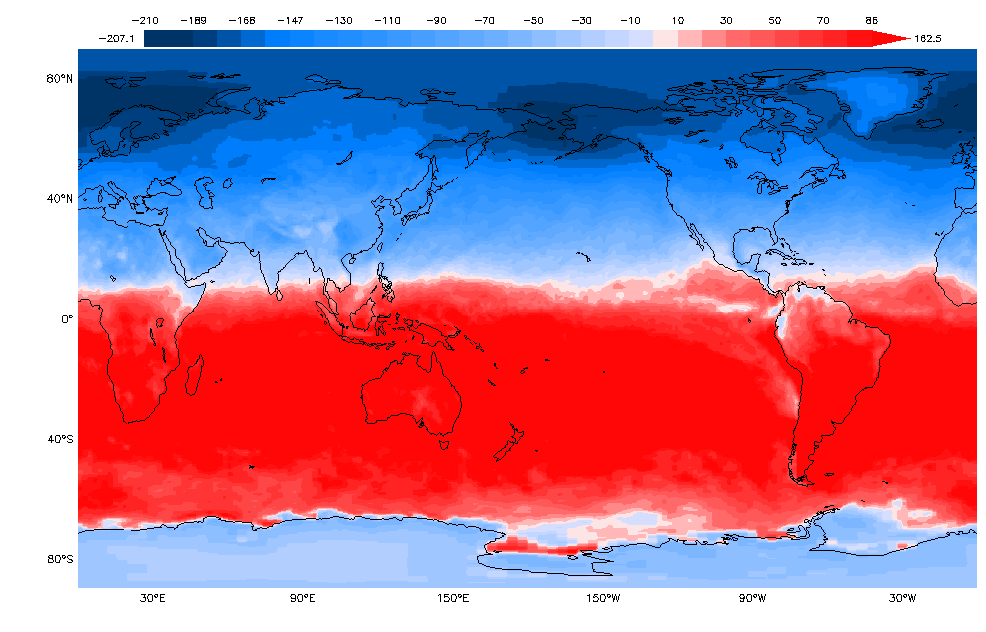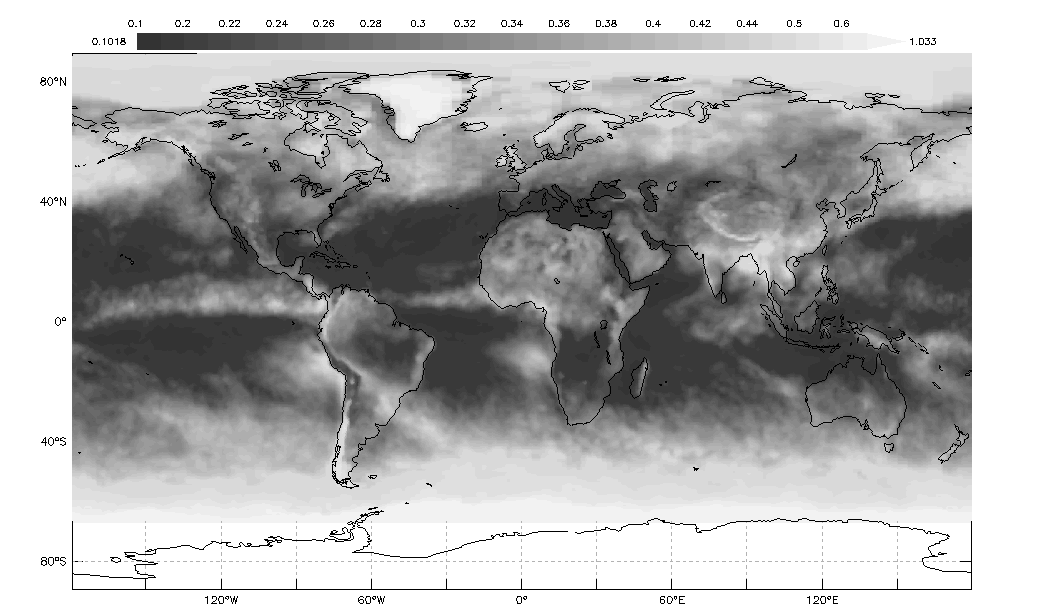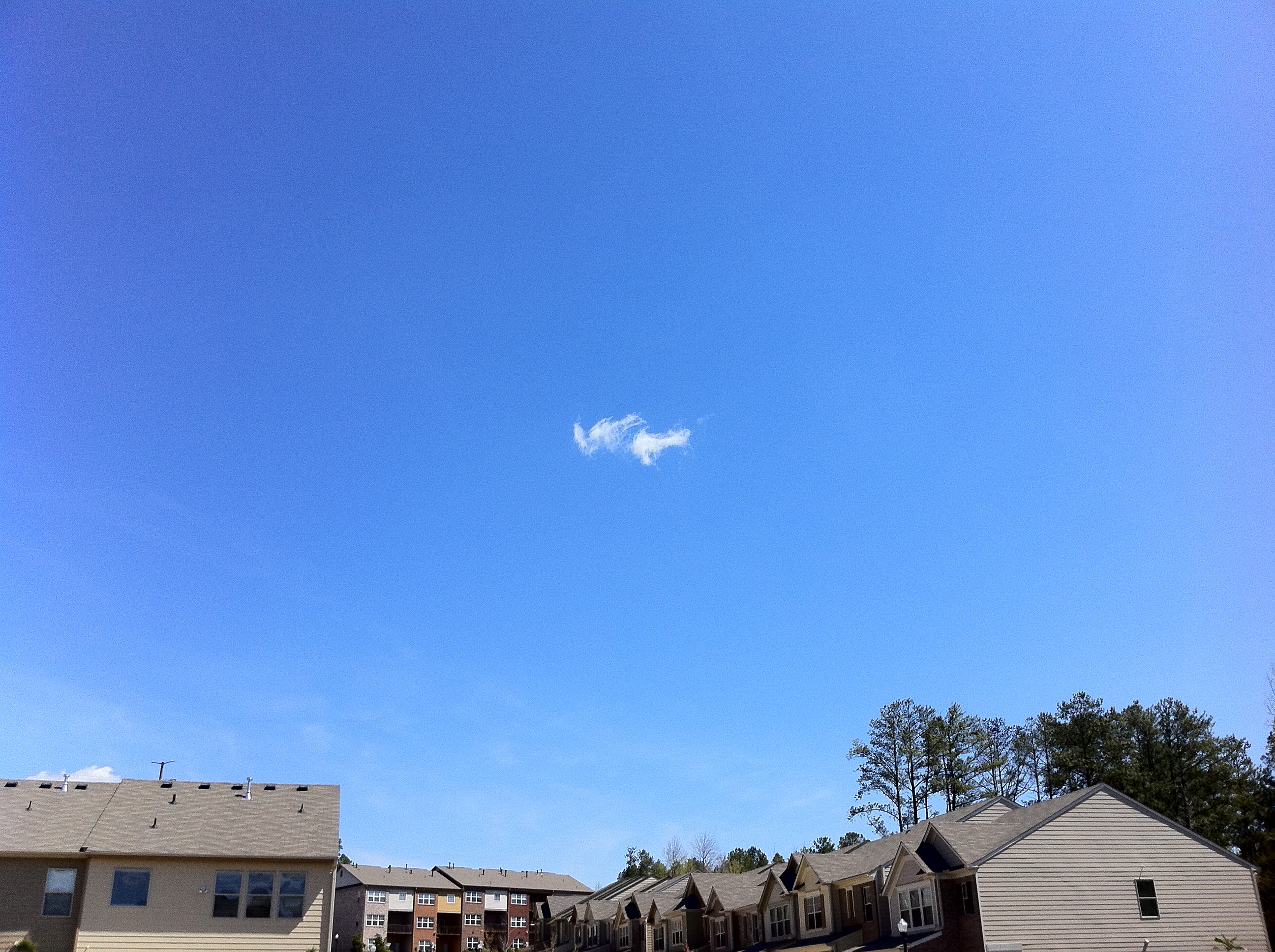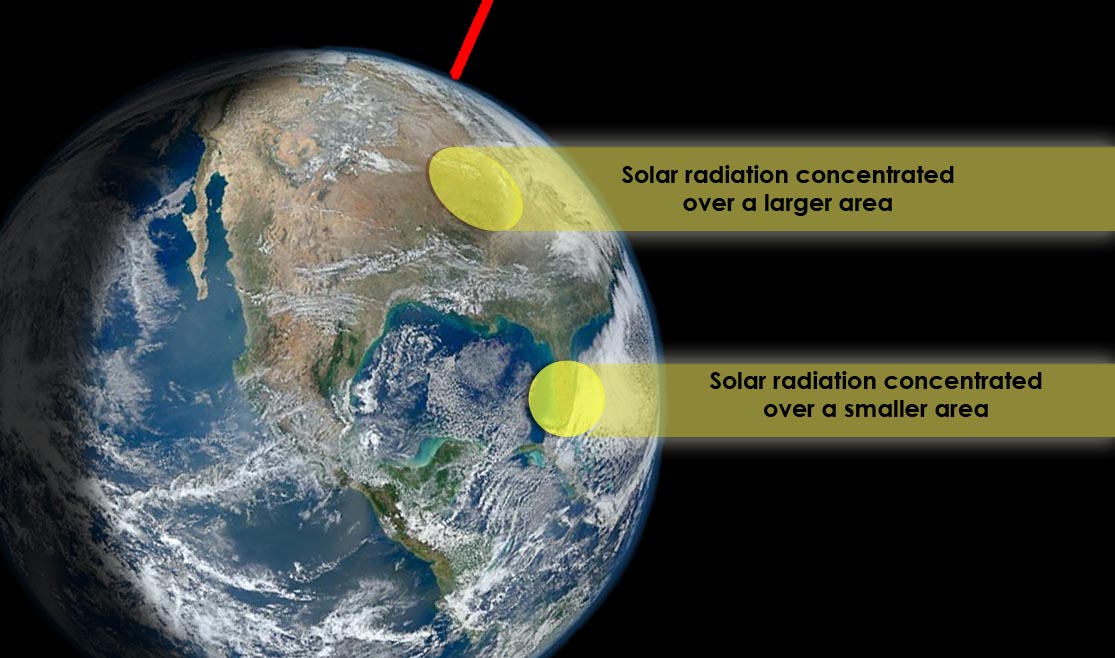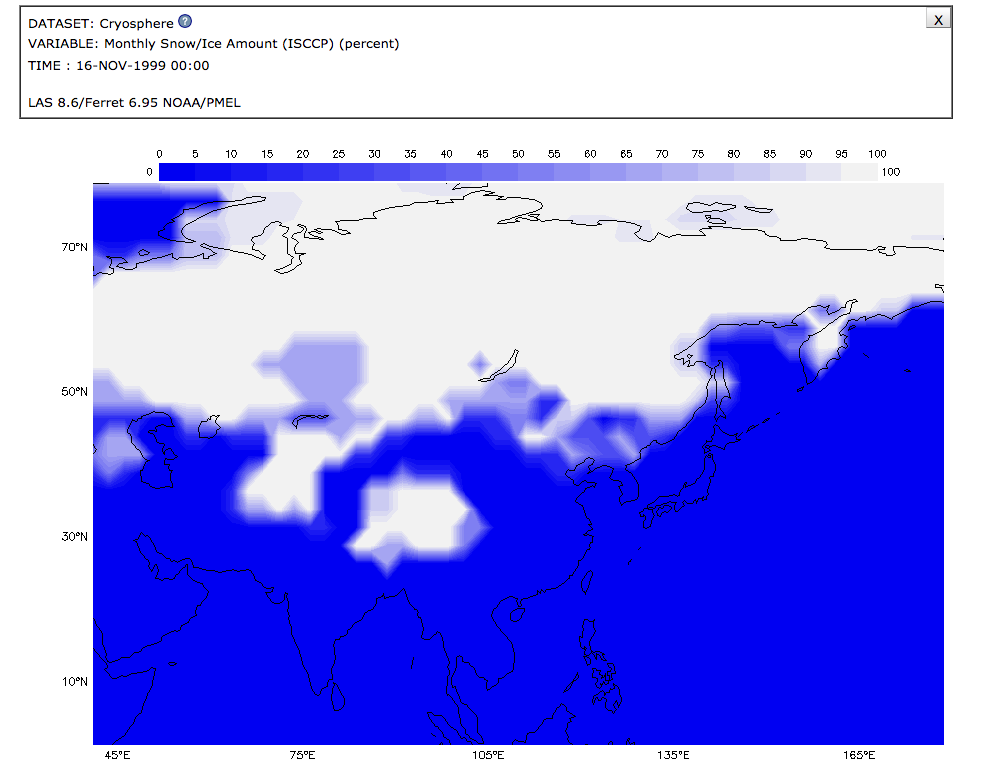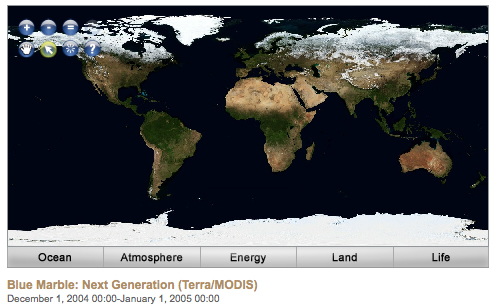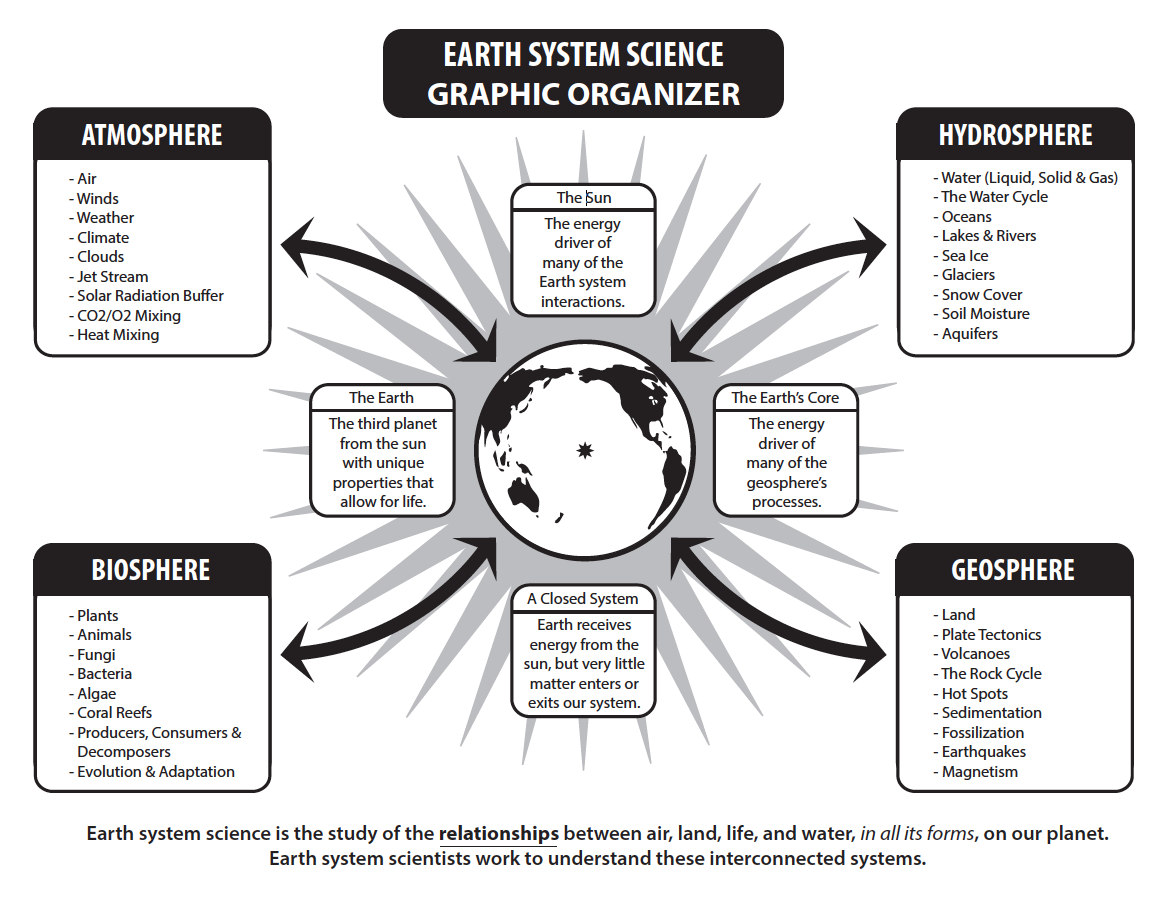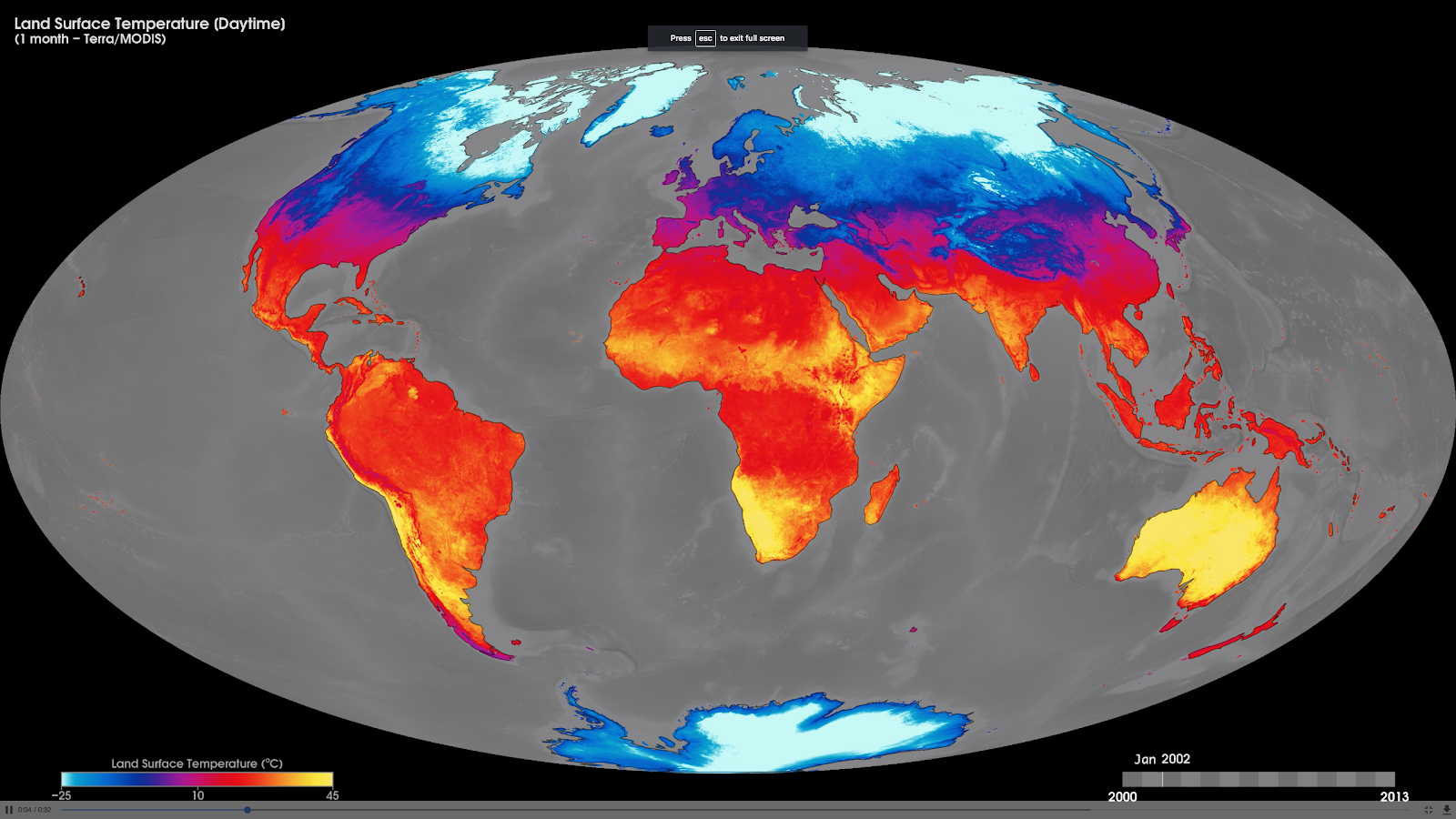Energy powers the transformation and movement of matter in all Earth system processes. Earth’s major cycles connecting matter found within the different spheres include the energy cycle, the water cycle, and the cycles of important individual elements (e.g., carbon and nitrogen).
>> Read More >>
Just one moment,
loading Earth as a System...
Featured Lesson Plans
-
-
-
-
-
-
-
Grade Level: 9-12
Students move through a series of short activities to explore and evaluate global solar radiation data from NASA satellites. In this process, students make qualitative and quantitative observations about seasonal variations in net energy input to the Earth System.
Grade Level: 6-8, 9-12
Students analyze map visualizations representing the amount of Sun’s energy received on the Earth as indicated by the amount that is reflected back to space, known as “albedo”.
Grade Level: 3-5, 6-8, 9-12
Students will analyze and interpret graphs to compare the flow of (shortwave) energy from the Sun toward China over the course of a year on cloudy versus clear days. Students will draw a conclusion and support it with evidence.
Grade Level: 6-8, 9-12
Students will analyze and interpret maps of the average net atmospheric radiation to compare the flow of energy from the Sun toward Earth in different months and for cloudy versus clear days. Students will draw conclusions and support them with evidence.
Grade Level: 6-8
Students will analyze surface temperature and solar radiation data to construct explanations about the relationship of seasons and temperature to the amount of solar energy received on Earth’s surface.
Grade Level: 3-5
In this lesson, Observing Earth’s Seasonal Changes, students observe patterns of average snow and ice amounts as they change from one month to another, as well as connect the concepts of the tilt and orbit of the Earth (causing the changing of seasons) with monthly snow/ice data from January 2008
Grade Level: 6-8, 9-12
Air, Water, Land, & Life: A Global Perspective
Previous
Next
Grade Level: 9-12
Students move through a series of short activities to explore and evaluate global solar radiation data from NASA satellites. In this process, students make qualitative and quantitative observations about seasonal variations in net energy input to the Earth System.
Grade Level: 6-8,
9-12
Students analyze map visualizations representing the amount of Sun’s energy received on the Earth as indicated by the amount that is reflected back to space, known as “albedo”.
Grade Level: 3-5,
6-8,
9-12
Students will analyze and interpret graphs to compare the flow of (shortwave) energy from the Sun toward China over the course of a year on cloudy versus clear days. Students will draw a conclusion and support it with evidence.
Grade Level: 6-8,
9-12
Students will analyze and interpret maps of the average net atmospheric radiation to compare the flow of energy from the Sun toward Earth in different months and for cloudy versus clear days. Students will draw conclusions and support them with evidence.
Grade Level: 6-8
Students will analyze surface temperature and solar radiation data to construct explanations about the relationship of seasons and temperature to the amount of solar energy received on Earth’s surface.
Grade Level: 3-5
In this lesson, Observing Earth’s Seasonal Changes, students observe patterns of average snow and ice amounts as they change from one month to another, as well as connect the concepts of the tilt and orbit of the Earth (causing the changing of seasons) with monthly snow/ice data from January 2008
Grade Level: 6-8,
9-12
Air, Water, Land, & Life: A Global Perspective
Grade Level: 3-5
This lesson introduces the Earth system science spheres through model making and discussion.
Grade Level: 6-8
Examine (daytime) surface temperature and solar radiation received at locations found near similar latitudes using NASA Data.
Grade Level: 6-8,
9-12
Students are introduced to the Earthrise phenomenon by seeing the Earth as the Apollo 8 astronauts viewed our home planet for the first time from the Moon. They will analyze a time series of mapped plots of Earth science variables that NASA monitors to better understand the Earth
Energy and Matter landing page. Explore maps, graphs, data, and related education resources. These resources include lesson plans, mini lessons, activities, and datasets for teachers and students.


